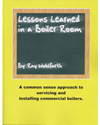Stakeholder discussions to control impurities in end-of-life brass scrap

On Feb. 21, 2017, the Copper Development Association held a summit where ASA along with other stakeholders gathered to discuss the recycling of lead-free brass products.
As introduced on January 2014, EPA requires the maximum lead content for the wetted surfaces of plumbing products used in potable water to be 0.25%. Prior to the January 2014 amendment, the maximum lead content was 8%. To comply with the amendment, manufacturers, rod and bar stock producers replaced the lead in the material with other elements such as bismuth, silicon, tellurium, etc.
Due to the many types of lead-free alloy products in the market, it is becoming a challenge to identify what type of lead-free alloy products are being recycled. If this issue is not addressed, it may create the process of material difficult and eventually create materials containing larger amount of impurities.
According to the CDA, “It is important to keep leaded brass scrap separate from scrap used to produce lead-free brasses which should not contain lead by definition. Even within lead-free scrap, strict segregation is needed to keep scrap containing certain elements such as silicon and bismuth separate. These elements can irreversibly concentrate up over time in the metal stream and are impossible to remove from the melt with economic production technology. The presence of any undesirable impurities can cause problems such as hot shortness which causes expensive failures during casting and hot extrusion.”
According to an article written by Scrap Magazine, elements such as “bismuth has a negative effect on “several physical characteristics of the copper, making it useless for applications that are really widespread such as wire,” writes Dirk Goris of secondary smelter Metallo-Chimique (Beerse, Belgium).
According to the CDA’s report, bismuth is a “potent embrittler of high-copper alloys,” which means it is “critical to avoid mixing bismuth brass scrap with the cast engineering alloys such as the aluminum bronzes or copper-nickel alloys.”
If the bismuth content in smelting operations exceeds the desired level for certain applications, the only solution is dilution. “Some scrap contaminated with undesirable impurities can sometimes be diluted so that the impurity level is reduced to an acceptable range for smelting,” Goris writes. Alloys that contain 1.5% to 3.5% t bismuth would require a dilution of at least 150 to 300 times with bismuth-free scrap to reduce the bismuth content of the copper anodes to the target level of 1 part per million. “In practice,” Goris adds, “a much higher dilution is required since some bismuth is already present in the common copper scrap.”
At the CDA summit, many ideas were circulated and discussed such as the possibility of a universal marking to identify lead-free products containing bismuth, silicon, etc. It also was discussed that the industry already marks brass products as lead-free (“LF”) or no-lead (“NL”), as well as that the product may contain compliance labels such as NSF 372. However, the consistency is lacking and marks do not indicate what type of alloy is used.
Markings on products are intended to inform the consumer that the product is safe and that it meets the minimum safety standards. The consumer, at the end of the day, is not concerned whether the product contains silicon or bismuth; all the consumer is concerned about is the product is safe for use and that it contains no lead. Therefore, the recycling of lead-free products may be an issue that can be solved between the mills, suppliers/manufacturers and the scrap industry; and not involve a universal marking.
Automated sensor-based sortation technology also was discussed. Two viable methods for sorting mixed brass scrap are laser-induced breakdown spectroscopy and X-ray fluorescence. These methods can be used by the scrap industry to sort and identify materials prior to sending to manufacturers or mills. This solution seems attainable since sensor-based sortation technology is commercially available and is likely capable of segregating different alloy types in mixed primary and secondary brass scrap. While sorting solutions are available, an additional processing step is required, which will eventually add cost to the consumer.
Though no concrete recommendations came from the CDA summit, it is an important issue and ASA appreciates the opportunity to participate. ASA plans to continue participating in the CDA discussions and to be fully engaged so that the interests and concerns of ASA members are heard.
In the meantime, CDA indicated it will continue to look at the benefits and barriers discussed at the summit to determine the next steps. A copy of the slides used during the CDA stakeholder summit can be obtained here.
ASA members wishing to voice their opinions on this issue and for questions pertaining to the recycling of lead-free brass products, please contact Hugo Aguilar, P.E. at engineer@asa.net.
Looking for a reprint of this article?
From high-res PDFs to custom plaques, order your copy today!






